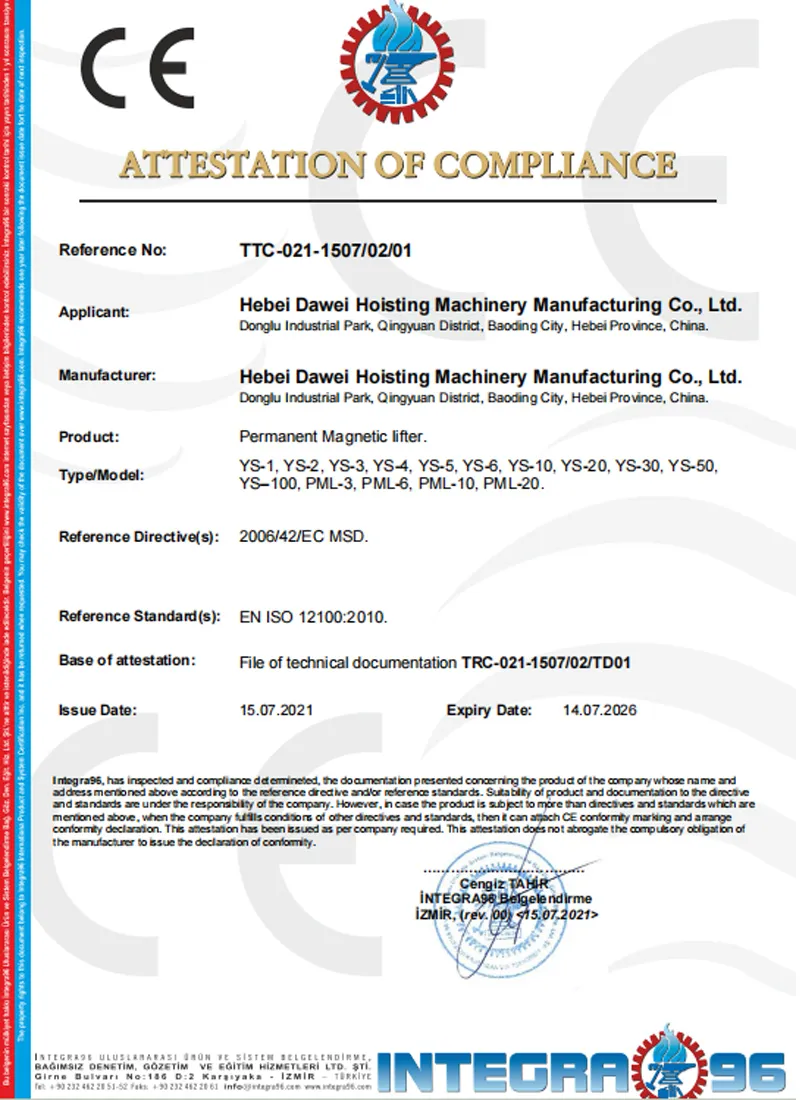gantry crane price
The Factors Influencing Gantry Crane Prices A Comprehensive Guide
Gantry cranes are vital pieces of equipment in various industries, providing overhead lifting solutions for transporting heavy materials and goods. Their versatility makes them popular in manufacturing, construction, and shipping sectors. However, potential buyers often find themselves wondering what factors influence the price of gantry cranes. In this article, we’ll explore the key components that determine gantry crane prices and provide insights for businesses looking to invest in this essential equipment.
1. Type of Gantry Crane
One of the primary factors affecting the price of gantry cranes is the type of crane being purchased. Gantry cranes come in various configurations, including single girder and double girder designs. Single girder cranes are generally more affordable due to their simpler construction and lower material costs. In contrast, double girder cranes offer greater lifting capacities and stability, but they come at a higher price point. Specialized cranes, such as those designed for outdoor use or those with additional features like adjustable heights, will also command higher prices.
2. Load Capacity
Another significant determinant of gantry crane prices is the load capacity. Gantry cranes are engineered to lift varying weights, and the higher the load capacity, the more robust the construction materials and engineering designs need to be. A crane with a higher load capacity will not only require more expensive materials but also more advanced technology to ensure safety and reliability. Businesses must carefully assess their operational needs to select a crane that fits their lifting requirements without overspending on unnecessary capacity.
3. Material Quality and Construction
The materials used in the construction of gantry cranes play a crucial role in pricing. Cranes made from high-quality steel and other durable materials are often more expensive, but they offer better strength, longevity, and resistance to wear and tear. Additionally, the manufacturing process and design intricacies can affect the overall cost. Custom-built cranes tailored to specific operational needs might require specialized components and craftsmanship, leading to a higher investment.
gantry crane price

4. Brand Reputation and Warranty
The brand of the gantry crane also influences its price. Established manufacturers with a strong reputation for quality and reliability often charge premium prices due to their track record. These brands typically offer better warranties and customer service, which can be valuable for businesses looking for peace of mind with their investment. Cheaper options may be available from less-known brands, but potential buyers should weigh the risks of quality and support against initial costs.
5. Additional Features and Technology
Modern gantry cranes often come equipped with advanced features, such as remote control operation, automated systems, and safety enhancements like overload protection. While these innovations can significantly increase the initial price, they also enhance efficiency and safety, potentially leading to lower operational costs in the long run. Buyers should consider how these features align with their operational needs and budget constraints.
6. Market Trends and Economic Factors
Finally, gantry crane prices can fluctuate based on market trends and economic conditions. Supply chain disruptions, changes in material costs, and shifts in demand can all impact pricing. Businesses should stay informed about market conditions and trends to make educated purchasing decisions.
Conclusion
When considering the price of a gantry crane, it’s essential to evaluate all the factors outlined above. Businesses should assess their specific needs, weigh the importance of quality versus cost, and analyze market conditions to ensure they are making a smart investment. By taking a comprehensive approach to purchasing gantry cranes, businesses can optimize their operations and ultimately drive greater productivity in their industrial tasks.
-
Unlock Seamless Relocation with Our Heavy Equipment Moving ExpertiseNewsJun.06,2025
-
Unleash Unrivaled Flexibility with Our Adjustable Gantry CraneNewsJun.06,2025
-
Unleash Heavy-Duty Efficiency with Our Industrial Gantry Crane SolutionsNewsJun.06,2025
-
Revolutionize Steel Handling with Our Magnetic Lifter RangeNewsJun.06,2025
-
Master Equipment Mobility with Premium Machinery Mover SolutionsNewsJun.06,2025
-
Elevate Your Material Handling with Magnetic Lifter TechnologyNewsJun.06,2025
-
YS Permanent Lifting Magnets: The Smarter Way to Handle SteelNewsMay.22,2025
